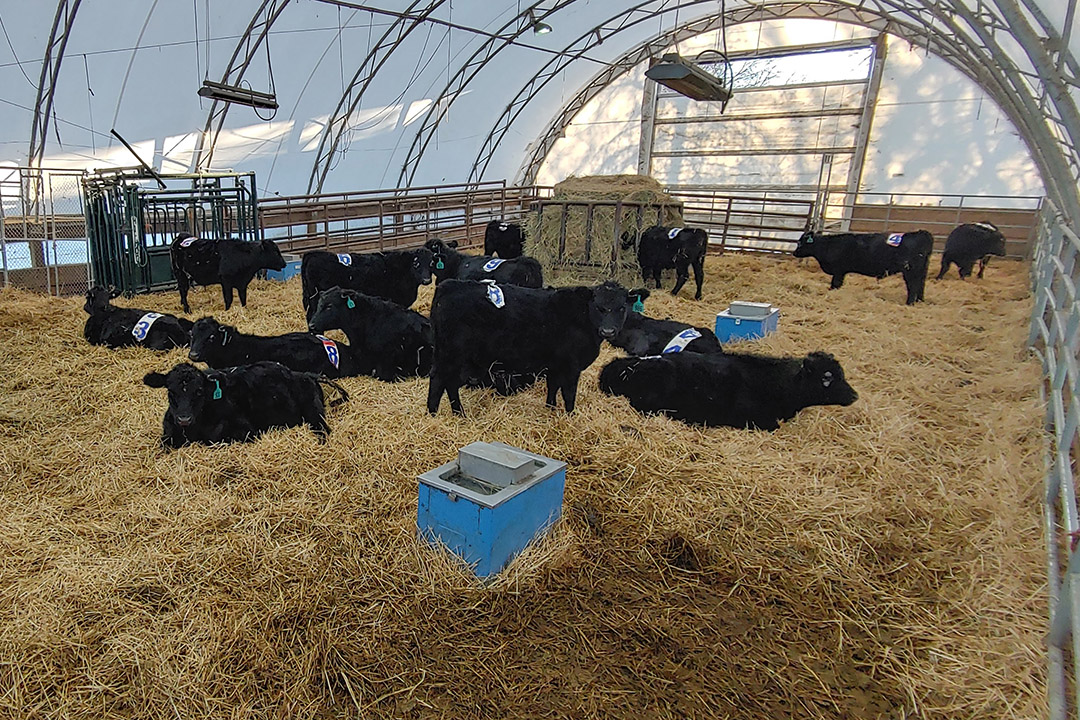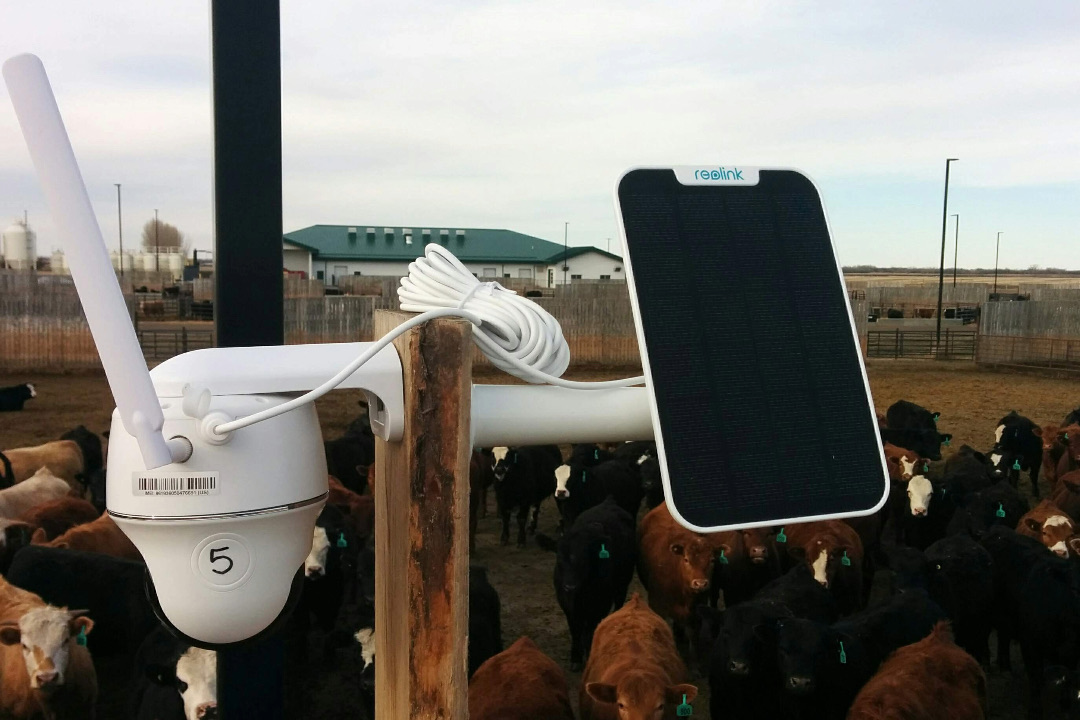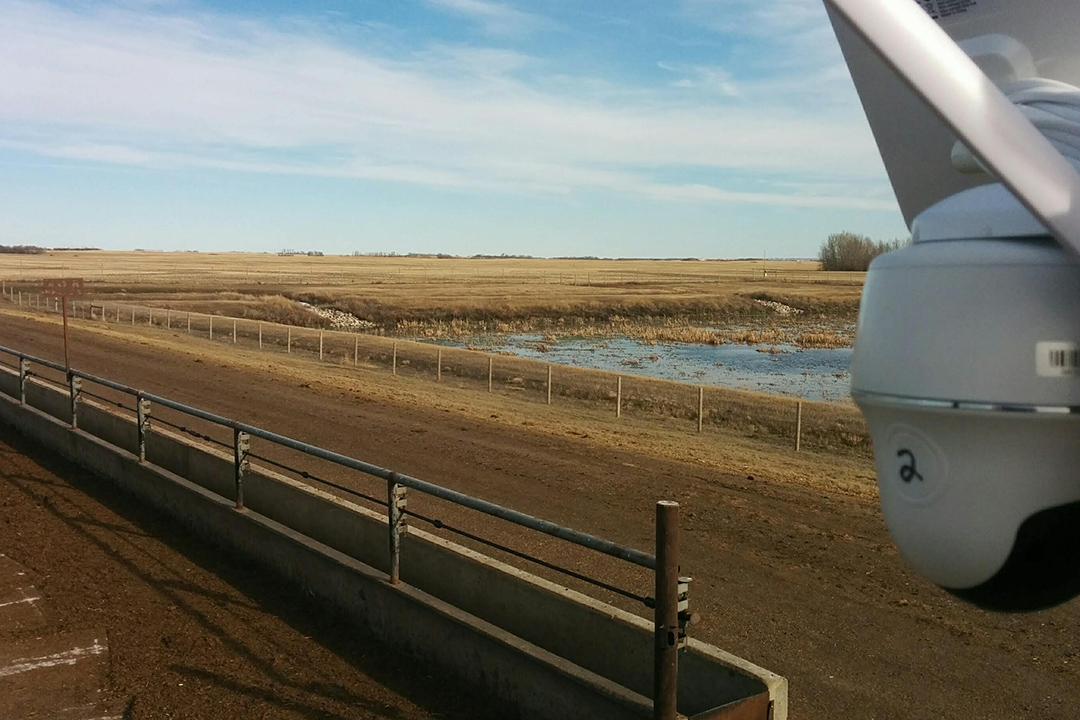
Cameras give ‘bird’s eye view’ of bovine respiratory disease
Precision technological advancements such as the use of cameras in livestock production could provide beef cattle feedlot employees a “bird’s eye view,” allowing them to monitor and flag any cattle showing signs of illnesses such as bovine respiratory disease.
By Kiah SimpsonBovine respiratory disease (BRD), also known as shipping fever, is one of the most common and costly diseases that affect the North American beef cattle industry. Mainly affecting the lungs of cattle, BRD is highly prevalent during the first week or two after animals arrive at a feedlot.
Weaning and shipping — two of the high-stress events that happen before calves arrive at feedlots — can depress their immune systems and increase their chance of developing disease. However, an accurate and timely diagnosis of BRD can maximize the effectiveness of subsequent antibiotic treatments.
“Bacteria, viruses, environmental stressors, immune system status — all of these factors working together in various combinations can create a perfect storm for respiratory disease complex,” says Dr. John Campbell, a professor and beef cattle specialist at the Western College of Veterinary Medicine (WCVM).
Working with Drs. Diego Moya and Nathan Erickson from the WCVM’s Department of Large Animal Clinical Sciences, Campbell participated in a recent study aimed at evaluating the use of precision livestock farming technologies to develop accurate and objective definitions of cattle with BRD.
Using cameras placed above the pen of the subjects, the researchers observed any behavioural changes that occurred in the cattle following treatment for BRD. Since the cameras allowed for continuous video collection, team members completed analyzing all of the footage with the goal of identifying the specific behaviours indicative of recovery.
“[Behaviours] vary quite a bit,” Campbell explains. “All cattle are somewhat prey animals, so they are good at disguising when they feel sick. You’re looking for fairly subtle signs. [But] the current case definition is very vague: ‘They look sick and have a fever.’”

By establishing a baseline for the “abnormal” behaviours that indicate respiratory disease, advanced livestock technologies could provide a more accurate means for monitoring the animals that would alert staff to the changes that occur before diagnosis and after treatment for BRD.
“Most feedlots have people who work there called pen checkers who go through the pens every day observing the cattle and try to identify those that they think might be sick — largely through visual observation and understanding what normal animal behaviour is,” explains Campbell. “But what is normal? What is abnormal? And what of those abnormal things predicts respiratory disease?”
The common observable clinical signs of BRD include nasal discharge, depression, reduced feed intake, separation from herd, changing respiratory rates and coughing. Since some of these behaviours last only a short time, they can be easily missed during routine pen checks.
“The difficulty with [current feedlot monitoring methods] is you need someone that is knowledgeable with animal behaviour. Those people are sometimes few and far between,” says Campbell. “The huge challenge with all of these [precision technologies] is you can invent a system to track behaviour, but you still have to come up with an algorithm for the behaviours that accurately predict respiratory disease.”

Temperature-sensitive LED tags, accelerometers, pedometers and radio frequency identification (RFID) tags are a few examples of other precision livestock technologies that have been studied and are now used in commercial feedlot operations. These technologies also detect changes in behaviour, whether it be through the animals’ body temperature, the number of steps taken, or the time spent at the feed bunk.
“I think we will gradually see more and more as some of these systems get cheaper. We are seeing adaptations coming in industries such as dairy already, so it is probably just a matter of time [for the beef cattle sector],” says Campbell.
“At the end of the day, it does come down to cost though. You are still going to need people to go in and select the sick cattle and bring them out of the pen and treat them, so you cannot completely eliminate your labour costs.”
Merck Animal Health Canada provided funding for this research project.
Kiah Simpson of Theodore, Sask., is a fourth-year animal science student in the University of Saskatchewan’s College of Agriculture and Bioresources. Her story is part of a series of articles written by WCVM summer research students.
